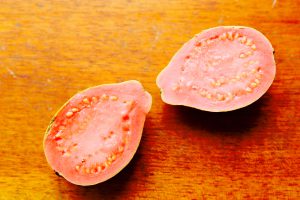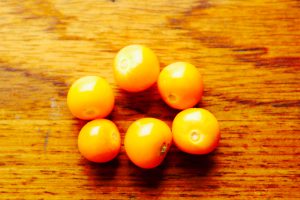Colombian Fruits
Welcome to the taste2travel Colombian Fruits feature article – the first post published on Taste2travel!
Date of Review: 26th of April 2016
Introduction
Note from Darren: This was the first ever post written on taste2travel in April of 2016. Humble beginnings!
I’m temporarily residing in Cali, Colombia. Each day I go to my local market to buy some of the fresh fruit, which grows in abundance here. There is always a large variety of fruit, some of it truly exotic. I was curious to try all of these and thought sharing the tasting results in a blog would be a good idea.
Due to the topography of the country, Colombia is perfect for growing all types of produce, from tropical fruits on the hot, humid coastal plains to cooler climate fruits high up in the Andes mountain range to really exotic stuff in the hot and steamy Amazon basin. No matter what the required growing condition Colombia can provide it.
It was all very delicious and something I will repeat again elsewhere. Without further ado, here are the fruits in question.
Fruit Selection
Yellow Dragon Fruit
English Name: Yellow Dragon Fruit
Spanish Name: Pitahaya Amarilla
Texture: Soft, leathery but firm skin/ soft and mushy fruit inside (like a kiwifruit)
Taste: Mild sweetness, slightly tart aroma, very much like a kiwifruit
Origin: The cactus this fruit grows on is native to Mexico. The fruit is now cultivated worldwide.
Local usage:
- Used in fruits salads
- Used in fruit juices with other fruits
Naranjilla


English Name: Naranjilla (translates from Spanish as ‘Small Orange’)
Spanish Name: Naranjilla (Ecuador & Panama)/ Lulo (Colombia)
Texture: Gritty skin, feels like sandpaper / soft, mushy, translucent pulp inside
Taste: Slightly tart citrus taste – like a lime
Origin: The plant this fruit grows on is native to northwestern South America (Colombia, Ecuador)
Local usage:
- Used as a juice
- Eaten with a sprinkle of salt
- Is also great in a Pisco Sour
Tamarillo


English Name: Tamarillo or Tree tomato
Spanish Name: Tomate de árbol
Texture: Just like a regular tomato/ soft fruit inside which peels away easily from the skin.
Taste: Slightly acidic like a combination of passionfruit and tomato.
Origin: The tree this fruit grows on is native to the Andes region (Ecuador, Colombia, Peru, Bolivia, Chile). The fruit is now cultivated worldwide.
Local usage:
- Blended with water and sugar to make a juice
- Used to make jams, spreads etc.
- Blended with chilli peppers to make a hot sauce
Curuba


English Name: Banana passionfruit
Spanish Name: Curuba
Texture: A member of the passionfruit family, the skin is soft, just like a banana. The fruit is orange in colour with black seeds and scoops out just like a passionfruit.
Taste: Tastes sweet
Origin: The vine this fruit grows on is native to the Andes region (Venezuela, Ecuador, Colombia, Peru, Bolivia, Chile). The fruit is now cultivated worldwide.
Local usage: Used in juice, normally with milk – like a smoothie
Sandia Amarilla


English Name: Yellow-skin watermelon
Spanish Name: Sandia Amarilla
Texture: Same as a regular watermelon
Taste: Similar to a regular watermelon but slightly more subtle in flavour
Origin: Hybrid watermelon developed in Asia
Local usage:
- Eaten raw
- Used in juices
- Used in fruit salads
Goiaba


English Name: Guava
Spanish Name: Goiaba
Texture: Soft smooth skin/ firm pink pulp with numerous hard seeds
Taste: A little sweet and a little tart
Origin: The tree this fruit grows on is native to Mexico, Central America and northern South America. The fruit is now cultivated worldwide.
Local usage:
- Eaten raw
- Used in juices
- Used in jams
- Used in fruit salads
Carambola


English Name: Star Fruit
Spanish Name: Carambola
Texture: Thin, smooth, waxy skin/ crunchy, juicy, fruit.
Taste: Tart, sour, slightly acidic
Origin: The tree this fruit grows on is native to southeast Asia and the Indian sub-continent. The fruit is now cultivated worldwide.
Local usage:
- Used in fruits salad
- Used in fruit juice
- Eaten with a squeeze of lemon
Granadilla


English Name: Granadilla
Spanish Name: Granadilla
Texture: A member of the passionfruit family, the skin is hard and slippery/ fruit consists of black seeds surrounded by a gooey, transparent pulp (just like a passionfruit).
Taste: Soft, sweet taste
Origin: The vine this fruit grows on is native to the Andes region (Venezuela, Ecuador, Colombia, Peru, Bolivia). The fruit is now cultivated worldwide.
Local usage:
- Eaten raw
- Used in fruit salads
Chirimoya


English Name: Custard Apple
Spanish Name: Chirimoya
Texture: Hard outer flesh/ soft, creamy fruit with large black seeds
Taste: A mellow sweet taste/ like a cross between pineapple and banana
Origin: The shrub this fruit grows on is native to the Andes region (Ecuador, Colombia, Peru, Bolivia). The fruit is now cultivated worldwide.
Local usage:
- Eaten raw
- Used in juices
- Used in ice-creams and yogurts
Uchuva


English Name: Cape gooseberry/ Goldenberry (USA)
Spanish Name: Uchuva
Texture: Feels like a cherry tomato/ soft, mushy fruit with small seeds inside
Taste: Has a sweet, mildly tart flavor
Origin: The plant this fruit grows on is native to Colombia, Ecuador and Peru. The fruit is now cultivated worldwide.
Local usage:
- Used in juices
- Used in fruit salads
- Used as a garnish for desserts in restaurants
Maracuya Amarilla


English Name: Yellow passionfruit
Spanish Name: Maracuya Amarilla
Texture: Same as a regular purple passionfruit (but much larger) with a hard, slippery skin / fruit consists of black seeds surrounded by a gooey, yellow pulp
Taste: As tart as a regular passionfruit
Origin: The vine this fruit grows on is native to the Amazon region of Brazil. The fruit is now cultivated worldwide.
Local usage:
- Used in juices
- Used in ice-cream, yogurt and baking
- Popular in a Pisco Sour for those for find the ‘Pisco’ taste to be too strong
Fruit Salad

Finally time to enjoy these fruits (and other less exotic ones) in a fresh fruit salad with some Greek yoghurt
Safe Travels!
Darren
Follow me on Instagram:
[instagram-feed feed=1]
Further Reading
Other travel reports from the region include:
- Amazon River Journey
- French Guiana
- French Guiana (Cayenne Carnival)
- Guyana
- Macapa to Manaus via the Guianas
- Suriname
- Venezuela (Gran Sabana Region)
Colombian Fruits Colombian Fruits Colombian Fruits Colombian Fruits
Author: Darren McLean
Darren McLean is an Australian, full-time, digital nomad who has spent 37 years on a slow meander around the globe, visiting all seven continents, 192/ 193 UN countries and 245/ 251 UN+ countries and territories.
He founded taste2travel to pique one’s curiosity and inspire wanderlust.





